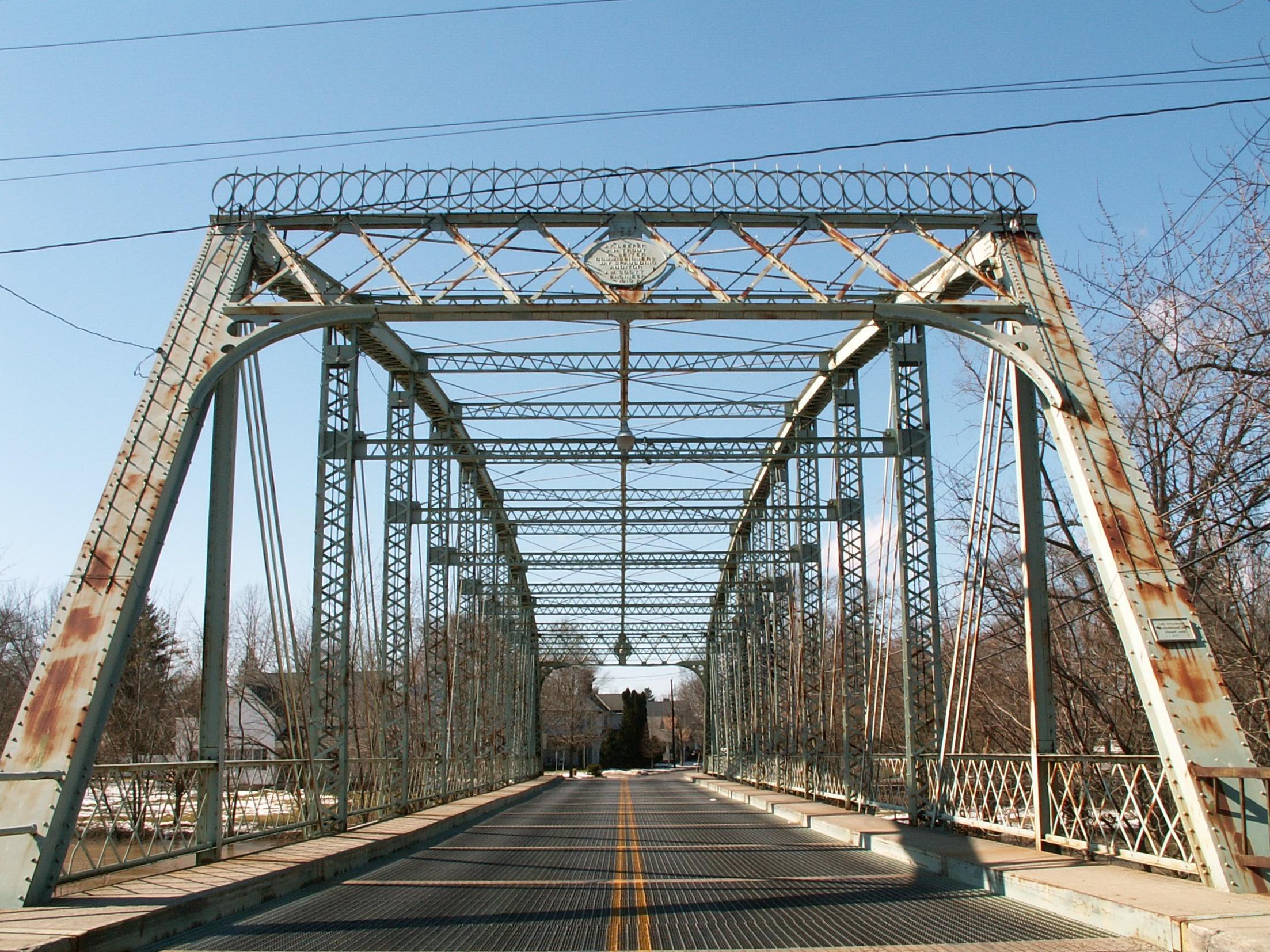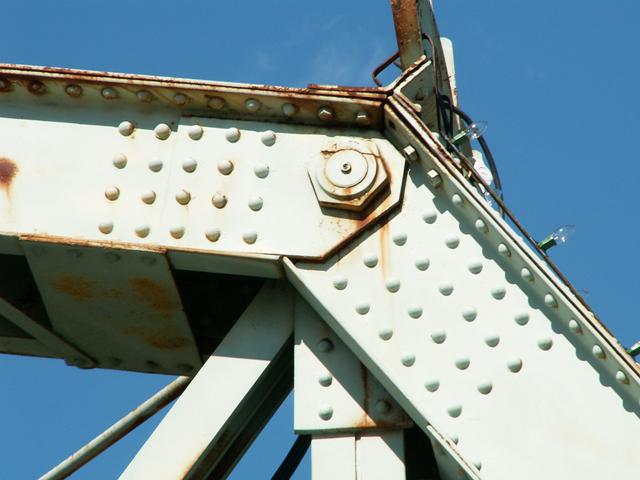We Recommend:
Bach Steel - Experts at historic truss bridge restoration.
Prospect Bridge

Primary Photographer(s): Nathan Holth and Rick McOmber
Bridge Documented: March 2, 2007
Prospect: Marion County, Ohio: United States
1913 By Builder/Contractor: Standard Engineering Company of Toledo, Ohio
1985
217.0 Feet (66.1 Meters)
226.0 Feet (68.9 Meters)
22 Feet (6.71 Meters)
1 Main Span(s)
5102251

View Information About HSR Ratings
Bridge Documentation
This bridge no longer exists!
View Archived National Bridge Inventory Report - Has Additional Details and Evaluation
This historic bridge was demolished and replaced July 2007.
This bridge is a magnificent structure, providing a single clear span of 226 feet over the Scioto River, and composed of eleven panels. It is one of those bridges that acts as a gateway for Prospect, providing a dramatic entrance into the city. It is ornately decorated, featuring attractive portal knee bracing, as well as a decorative design on top of the portal bracing. A late example of a pin-connected truss bridge, this is a very wide bridge, and features an unusual design of bracing overhead, in the form of a section of bracing that runs parallel to the top chord through the sway bracing.
This bridge appears to have once had cantilevered sidewalks, which were removed. The lattice railings from those sidewalks appear to have been saved, and indeed are the railings seen on the bridge today. They are oddly mounted inside the vertical members, and evidence of some cutting of parts of the railings to make them fit around diagonals is apparent. The bridge likely had no railings inside the truss lines prior to this alteration.
This bridge is worthy of being considered historic for its impressive span size. It is an unusually wide structure, and is well-decorated. It acts as an important gateway for Prospect, and is arguably the center attraction of the town. Unfortunately, ODOT does not agree with any of this, and feels that the only way to deal with the poor condition of the bridge is to demolish it. Under Section 106, they offered the bridge to a third party, but as one might guess, the bridge is of a size that only a unit as rich as the government can (and should) have to bear the burden of restoring this bridge for light vehicular or pedestrian use. It would have been nice to see this bridge restored, even with retrofitting, to allow this bridge to remain as an important historic landmark, and gateway for Prospect.
Information and Findings From Ohio's Historic Bridge InventorySetting/Context The bridge carries a 2-lane highway over a stream in an area of 19th and early-20th-century residential and commercial development in Prospect. Physical Description The 1 span, 226'-long, pin-connected Parker thru truss bridge is traditionally composed of built-up compression members and eye bar or rod tension members. The bridge has lattice portals decoratively finished with a circular medallion plaque and wrought-iron crestline. The stringers and open-steel grid deck were replaced in 1985. It's unclear from the available photos but it appears floorbeams were replaced or connections strengthened. The bridge is supported on concrete abutments. Integrity Deck replacement (1985) Summary of Significance The pin-connected Parker thru truss was fabricated by the Standard Engineering Company in 1913. It is a complete and long-span example of its type/design in the state context. It has had a deck replacement, but
that has not compromised its ability to convey its technological significance. A project was planned to replace the bridge in 1999 with an adverse effect, but the bridge is still in place in 2008. The eligible recommendation of the
prior inventory remains appropriate. Justification The later pin connected thru truss bridge is one of 13 extant examples of bridges with polygonal upper chords and/or subdivided panels in the state that date from 1888 until 1923. It is of moderate significance given that the numbers in the population. Bridge Considered Historic By Survey: Yes |
![]()
Photo Galleries and Videos: Prospect Bridge
Original / Full Size Gallery
Original / Full Size PhotosFor the best visual immersion and full detail, or for use as a desktop background, this gallery presents selected overview and detail photos for this bridge in the original digital camera resolution. This gallery offers photos in the highest available resolution and file size in a touch-friendly popup viewer.
Alternatively, Browse Without Using Viewer
![]()
Structure Overview
Mobile Optimized PhotosA collection of overview photos that show the bridge as a whole and general areas of the bridge. This gallery features data-friendly, fast-loading photos in a touch-friendly popup viewer.
Alternatively, Browse Without Using Viewer
![]()
Structure Details
Mobile Optimized PhotosA collection of detail photos that document the parts, construction, and condition of the bridge. This gallery features data-friendly, fast-loading photos in a touch-friendly popup viewer.
Alternatively, Browse Without Using Viewer
![]()
Maps and Links: Prospect Bridge
This historic bridge has been demolished. This map is shown for reference purposes only.
Coordinates (Latitude, Longitude):
Search For Additional Bridge Listings:
Bridgehunter.com: View listed bridges within 0.5 miles (0.8 kilometers) of this bridge.
Bridgehunter.com: View listed bridges within 10 miles (16 kilometers) of this bridge.
Additional Maps:
Google Streetview (If Available)
GeoHack (Additional Links and Coordinates)
Apple Maps (Via DuckDuckGo Search)
Apple Maps (Apple devices only)
Android: Open Location In Your Map or GPS App
Flickr Gallery (Find Nearby Photos)
Wikimedia Commons (Find Nearby Photos)
Directions Via Sygic For Android
Directions Via Sygic For iOS and Android Dolphin Browser
USGS National Map (United States Only)
Historical USGS Topo Maps (United States Only)
Historic Aerials (United States Only)
CalTopo Maps (United States Only)




